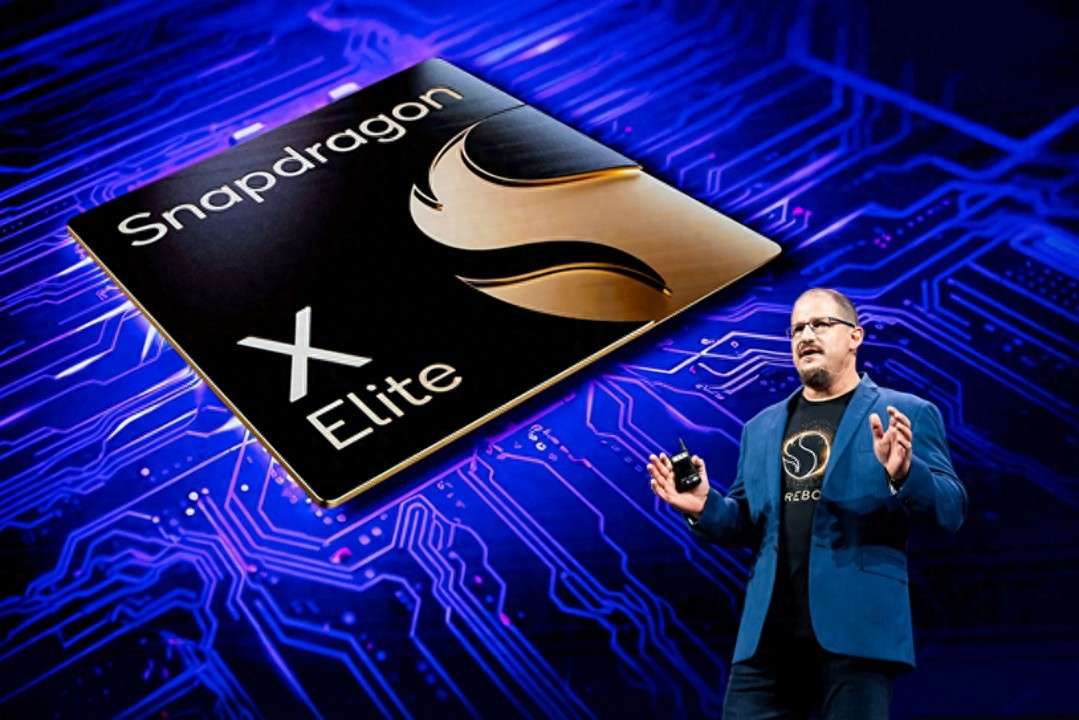Qualcomm Spearheads AI PC Push
Advertisements
After a year and a half of rapid advancements, the influence of artificial intelligence has finally made its way to the personal computer sector. On June 4, 2024, the COMPUTEX event kicked off with the theme "AI Connecting, Co-Creating the Future." This significant gathering in the global consumer computer marketplace spotlighted AI PCs as the main attraction. In late May, Microsoft officially unveiled “Copilot+PC” at its Developer Conference, heralding the dawn of the AI-PC era, which has raised considerable interest in how the industry will respond and adapt.
Among the many notable players, Qualcomm stands out as a particularly unique entity. Known as the undisputed leader in the smartphone platform arena, Qualcomm has notably underperformed in the PC market for years. However, with the release of the Snapdragon X Elite processor targeted at personal computers in October 2023, Qualcomm is now teaming up with the ever-powerful Microsoft to take a bold step into the AI-revolutionized PC industry.
In Microsoft’s latest launch of the Copilot+ PC, the Surface Laptop and Surface Pro are set to be the flagship models. These new offerings feature Qualcomm's Snapdragon X Elite and X Plus processors, replacing Intel's Core Ultra processors. Although Microsoft has indicated plans to introduce versions equipped with Intel and AMD chips in the near future, this is the first time the industry has taken notice of Qualcomm’s ambitious intentions for the PC sector.
The day before COMPUTEX commenced, Qualcomm's President and CEO Cristiano Amon showcased a partnership with seven leading PC manufacturers—Acer, Asus, Dell, HP, Lenovo, Microsoft, and Samsung—announcing the initial release of 22 Copilot+ AI PC models based on the Snapdragon X Elite and X Plus platforms.
Amon emphasized, "PCs are being redefined. The combination of Snapdragon X Elite and Copilot+ is opening a new chapter for PCs." He highlighted that the integration of the Snapdragon X series with Copilot+ is one of the most significant transitions for Windows in recent memory, akin to the launch of Windows 95 in its historical importance.
In Qualcomm's thrust towards AI PCs, the company has once again solidified its commitment by delivering remarkable performance with the Snapdragon X Elite. Testing data indicated that this processor, which boasts 12 cores, has delivered single-thread performance that surpasses competitors by up to 51%, all while consuming 65% less power at comparable performance levels.
Additionally, devices powered by the Snapdragon X Elite and X Plus currently hold the exclusive privilege of supporting the Copilot+ PC experience, enabling multi-day battery life, exceptional efficiency per watt, and an enhanced AI experience powered by an on-device NPU (Neural Processing Unit).
Amon stressed that the NPU is a key differentiator, allowing PCs equipped with the Snapdragon X series to deliver extraordinary performance, making the Copilot+ experience feasible. Offloading AI workloads from the CPU and GPU to the NPU significantly enhances performance while reducing power consumption.

Technical demonstrations indicated that the NPU integrated into the Snapdragon X Elite provides laptop computers with exceptional NPU performance per watt—up to 2.6 times higher than M3 counterparts and 5.4 times higher compared to Core Ultra 7. Furthermore, Qualcomm's proprietary Hexagon NPU boasts a staggering processing capability of 45 TOPS, capable of running generative AI models with over 13 billion parameters on-device.
Beyond hardware, Amon also introduced Qualcomm's leading-edge development tools designed for building next-generation AI applications. The Qualcomm AI Hub enables developers to deploy AI models on Snapdragon PCs in merely five minutes, whether using their custom models or Qualcomm’s pre-optimized ready-to-use models. Additionally, the company launched a new Windows Snapdragon development kit.
Following Qualcomm’s lead, other major chip manufacturers have also seized the opportunity to announce their plans in lockstep with Microsoft’s Copilot deployment at Computex.
On June 3, NVIDIA declared its commitment to supporting Microsoft's new Copilot+ initiative through its RTX series graphics cards. Founder Jensen Huang emphasized that this initiative aims to incorporate a range of powerful localized features into the Windows 11 ecosystem. The new Blackwell chips are now in production and set for a 2025 launch, with the next-generation AI chip architecture named Rubin, featuring HBM4 chips anticipated to debut in 2026.
Huang further revealed the introduction of NVIDIA NIM, an inference model microservice aimed at being deployed in cloud environments, data centers, or workstations. This innovative service allows developers to construct generative AI applications for platforms like Copilot and ChatGPT, reducing the required development time from several weeks to just a few minutes.
Intel announced its Xeon 6 platform, featuring processors with Efficiency cores, marking the first release built on Intel's 3-process technology. CEO Pat Gelsinger stated that the Zeon 6 processors would deliver 4.2 times the performance compared to prior generations in cloud and hyperscale data center applications, alongside a 2.6 times improvement in media transcoding efficiency. Furthermore, these processors can reduce rack size by one-third, saving 8,000 megawatt hours of power.
Gelsinger also promised that later this year, Intel will double the cores within the Zeon E-Core processor lineup, increasing to 288 cores. By leveraging a combination of Zeon technology with retrieval-augmented generation (RAG) and large language models (LLMs), the company aims to tap into the vast pool of untapped enterprise data.
Meanwhile, AMD announced plans to release its Ryzen 9000 series desktop processors (Granite Ridge) based on the new Zen5 architecture in July, alongside the AMD Ryzen AI 300 series APUs and the Radeon PRO W7900DS workstation graphics card.
“This is an extraordinarily exciting time, as the rapid and accelerated adoption of AI is driving an increasing demand for high-performance computing platforms,” proclaimed Dr. Lisa Su, AMD's chairperson and CEO.
Additionally, AMD introduced the X870 and X870E chipsets and showcased what they claim to be "the world's strongest data center CPU"—the fifth-generation EPYC "Turin" chip, which will offer up to 192 cores and 384 threads, with shipments slated for the fourth quarter of this year.
Write a Comment